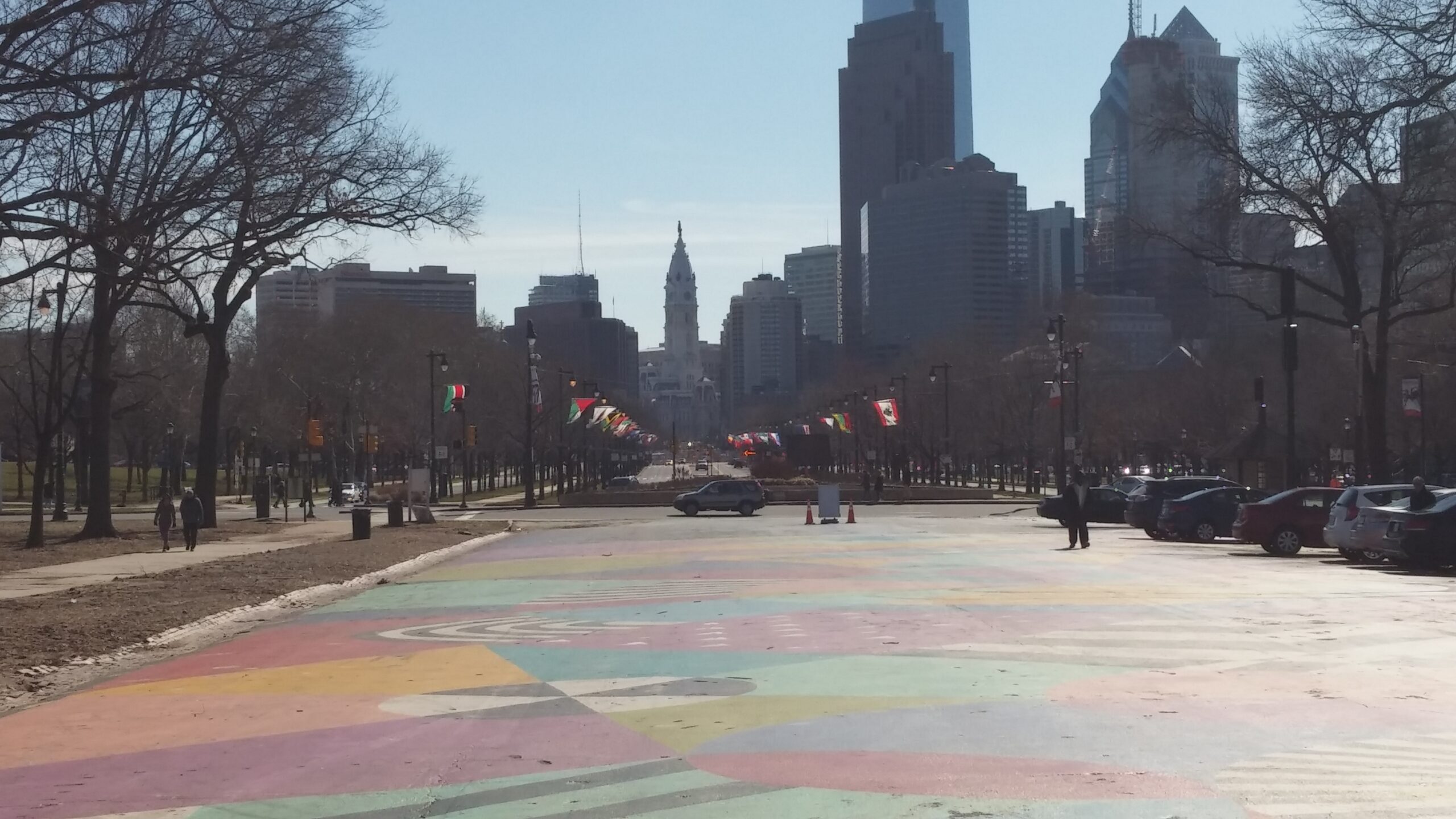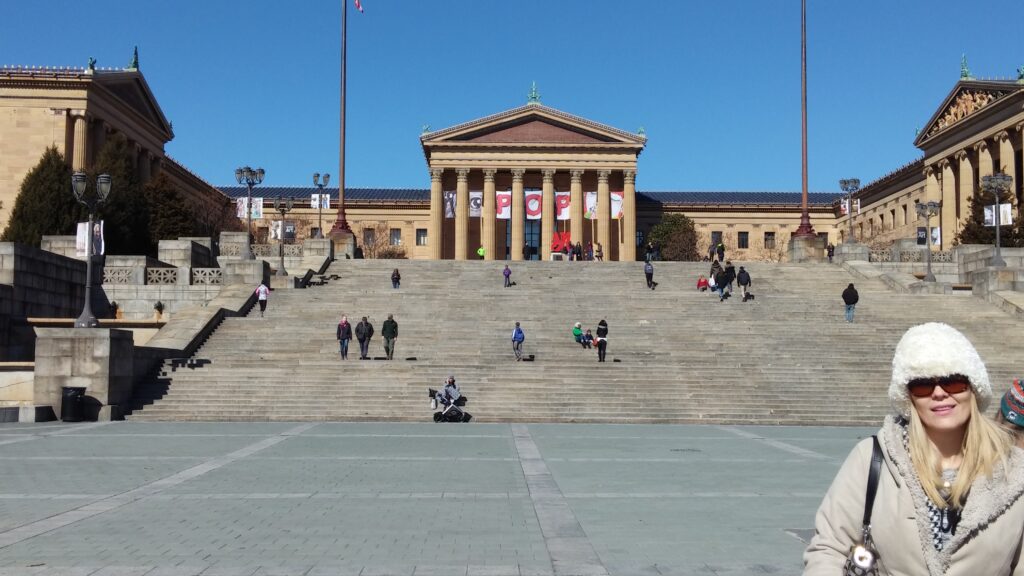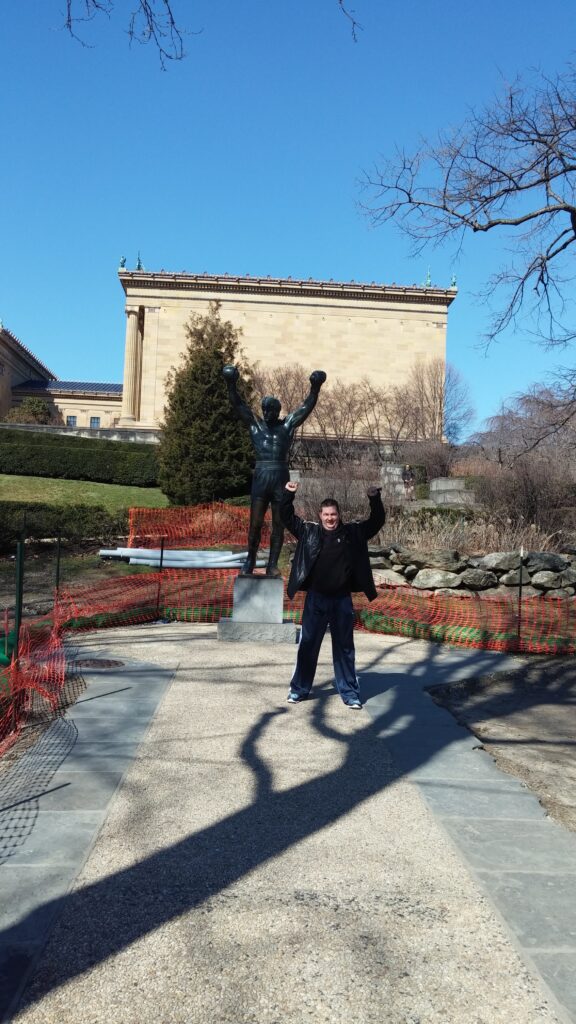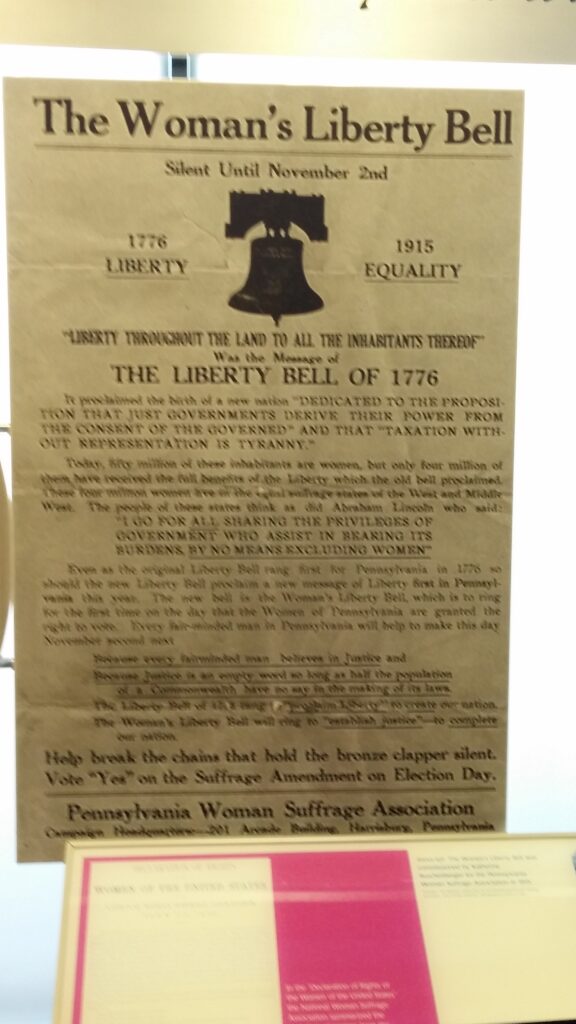
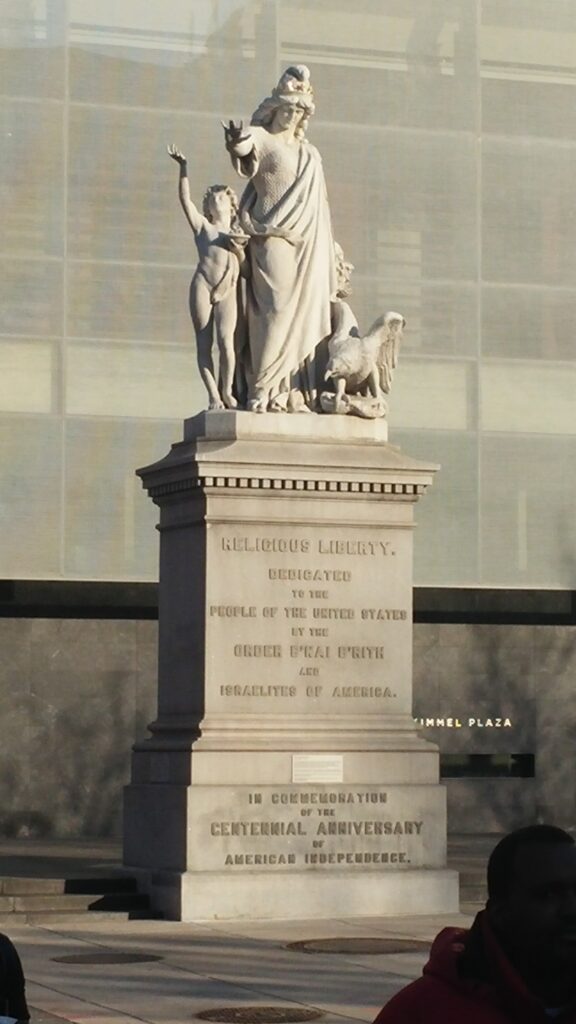
Philadelphia’s Historic District: An Immersion in Time
As I entered the Philadelphia Historic District, an enchanting aura of timelessness enveloped me, as if the cobblestone streets themselves whispered the stories of centuries past. The air was pregnant with the weight of historical significance, and every step I took seemed to echo the footfalls of visionaries and revolutionaries who had walked these very paths. The heart of this district, Independence Hall, emerged before me in all its stately splendor. Its imposing architecture seemed to stand as a sentinel, guarding the secrets of spirited debates and profound decisions that were made within its walls. It was here, within these hallowed chambers, that the Declaration of Independence and the Constitution were meticulously debated and ratified – acts that would shape the destiny of a nation and alter the course of human history. As I stood within the very chambers that had borne witness to these pivotal discussions, I was filled with a sense of reverence for the far-reaching consequences of those deliberations. The sensation of awe deepened as I ventured to the nearby Liberty Bell Center. The mere sight of the legendary Liberty Bell was enough to send shivers down my spine. Its flawless bronze surface, marred only by the iconic crack that spoke volumes of the passage of time, held an almost mystical allure. This bell, once a call to arms, now stood as a timeless symbol of freedom and unity. As I gazed at the bell’s crack, it was as though I could feel the vibrations of history coursing through my veins – a physical connection to the ideals that have shaped the very essence of America.
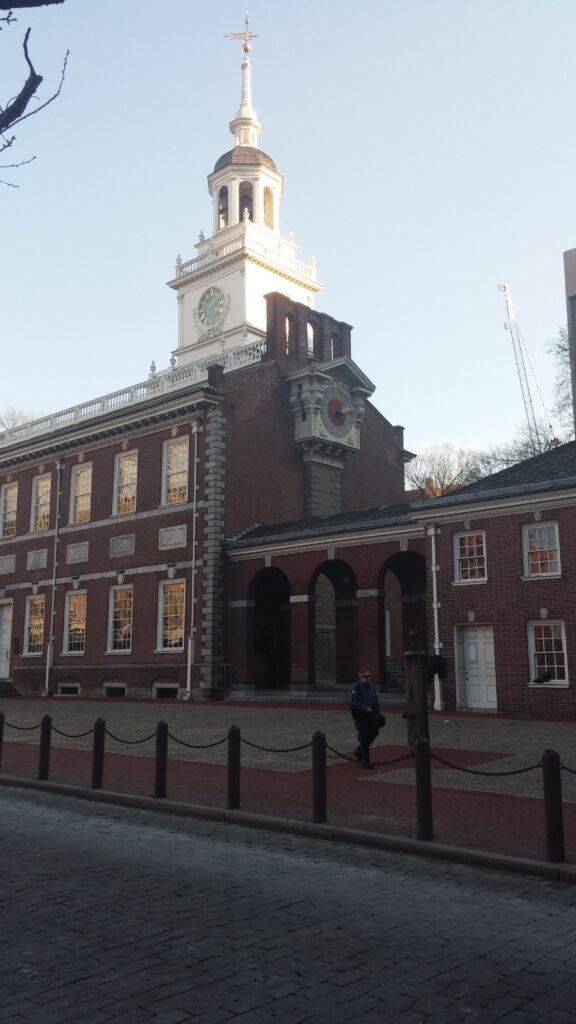
The Liberty Bell Center didn’t just house an artifact; it held a tangible connection to the aspirations and sacrifices of generations. he Liberty Bell, ensconced within the hallowed halls of Philadelphia’s Liberty Bell Center, is a testament to resilience, unity, and the indomitable spirit that has defined America’s journey to freedom. As I stood before this iconic artifact, I couldn’t help but be captivated by its rich history, which resonates with the struggles and aspirations of a nation. Cast in Whitechapel Bell Foundry in London in 1752, the Liberty Bell began its life with a melodious voice that would eventually ring across generations. Originally commissioned for the Pennsylvania State House (now known as Independence Hall) to commemorate the founding of the Pennsylvania Provincial Assembly, the bell was a symbol of civic pride and liberty even from its inception. However, it wasn’t until years later that the Liberty Bell would become synonymous with the American struggle for independence. Its distinctive tone echoed through the streets of Philadelphia on July 8, 1776, summoning citizens to hear the first public reading of the newly adopted Declaration of Independence. From that moment on, the bell’s identity became intertwined with the ideals of freedom and self-determination. As the Revolutionary War raged on, the bell’s symbolic significance only grew. In 1777, when British forces occupied Philadelphia, the decision was made to move the bell to a safer location, away from the hands of potential captors. The bell was transported to Allentown, where it was hidden under the floorboards of the Zion Reformed Church until it could return home after the war’s conclusion.
The Liberty Bell’s famous crack is as much a part of its story as its historic chimes. The precise origins of the crack remain shrouded in mystery, but it’s widely believed that the flaw developed shortly after the bell’s arrival in Philadelphia. Attempts to repair the crack were made, but they only succeeded in creating the distinctive, almost musical, tone that became the bell’s signature sound. Yet, despite its imperfection, the Liberty Bell’s voice became a rallying cry for generations. The abolitionists of the 19th century adopted it as a symbol of their movement, interpreting its inscription “Proclaim LIBERTY Throughout all the Land unto all the Inhabitants Thereof Lev. XXV. v. vI” as a plea for the abolition of slavery. Today, the Liberty Bell stands as an enduring emblem of freedom, democracy, and the unwavering pursuit of a more perfect union. Its cracked surface and resonating tones serve as a reminder that even in imperfection, there is strength. As I stood before this remarkable artifact, I felt a profound connection to the generations who had come before me, who had heard its call to arms and found inspiration in its enduring message. The Liberty Bell isn’t just a relic; it’s a living testament to the enduring ideals that continue to shape the course of history.
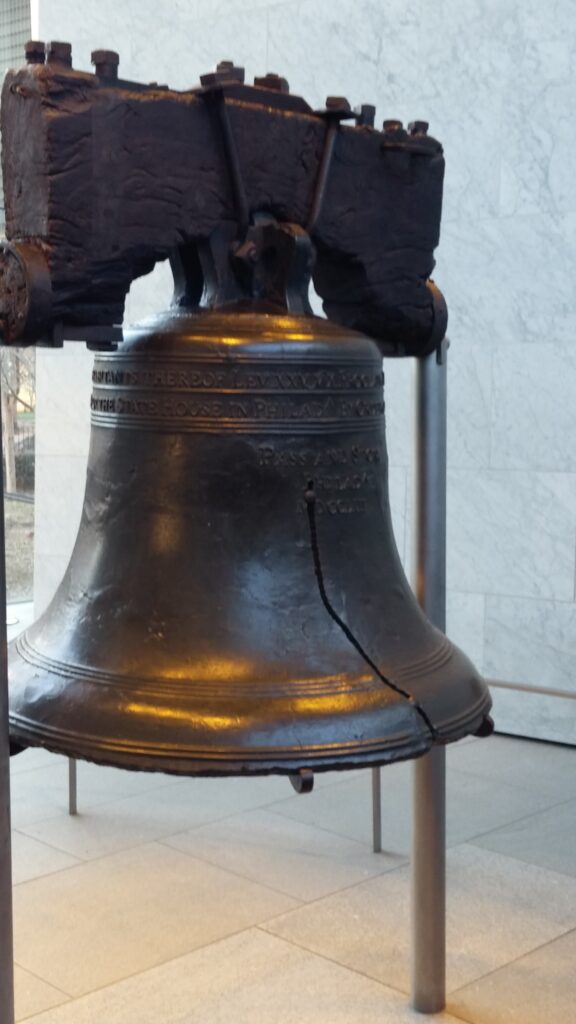
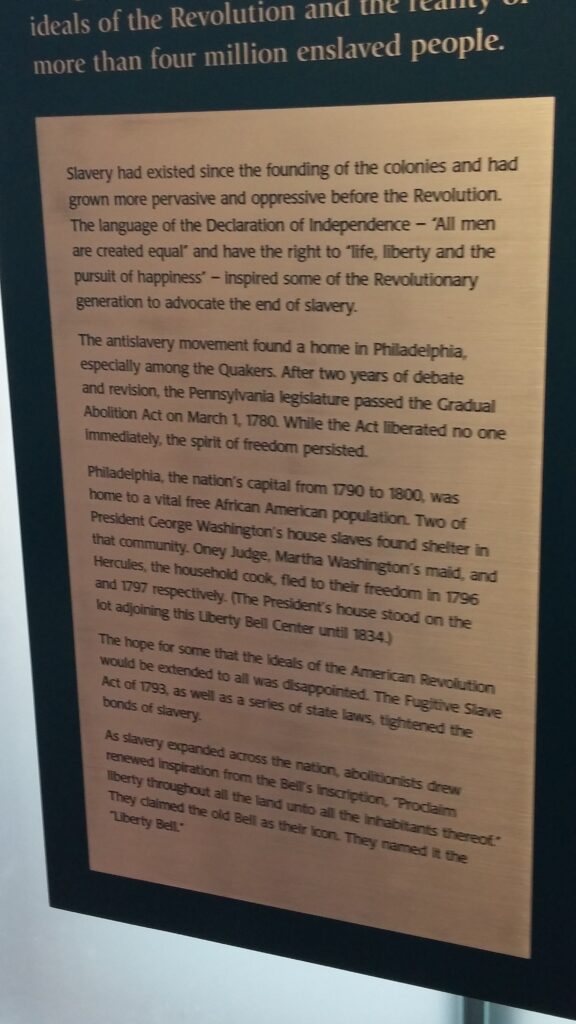
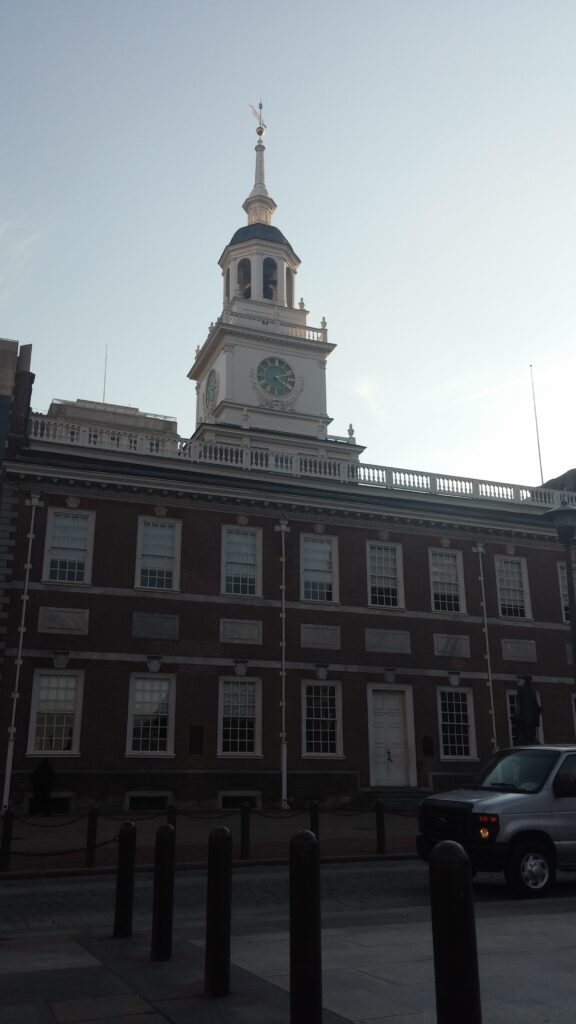
In this corner of Philadelphia’s Historic District, history was more than just a collection of facts in textbooks; it was a living, breathing entity that reached out and touched every visitor who stepped into its embrace. The stories of resilience, courage, and unity whispered from the cobblestone streets, the imposing façade of Independence Hall, and the hallowed space of the Liberty Bell Center. This was more than a tourist destination; it was an immersion into the very essence of a nation’s birth – an experience that left an indelible mark on my soul and ignited a newfound appreciation for the ideals that continue to shape America’s journey
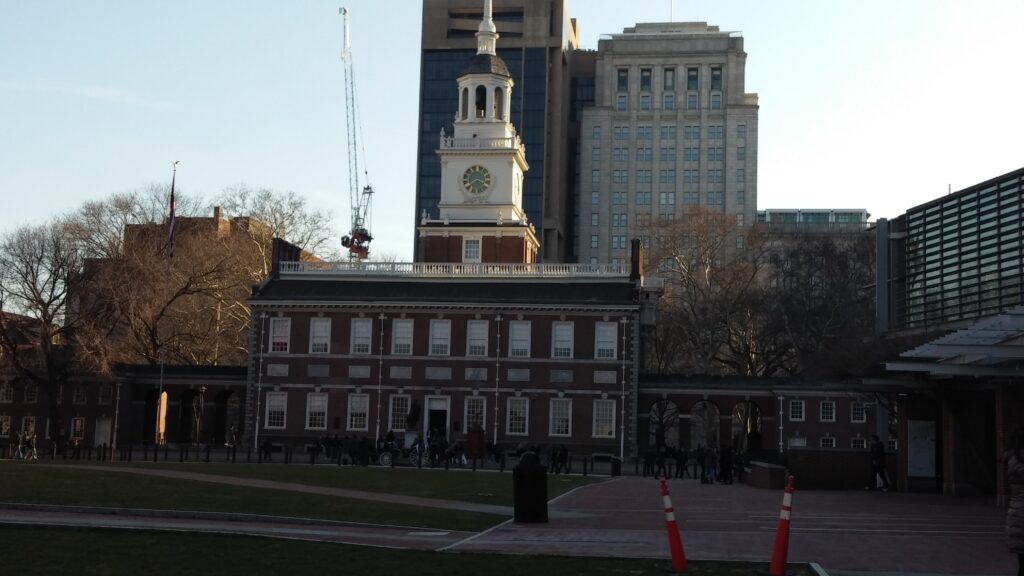
The Rocky Statue
Standing before the iconic Rocky statue at the Philadelphia Museum of Art, I felt like a participant in a cinematic narrative that had transcended the boundaries of the screen. This larger-than-life bronze figure, frozen in an enduring stance of victory, carried with it not only the weight of its fictional origins but also the very essence of determination and aspiration. The history of the Rocky statue is interwoven with the legacy of a beloved underdog and the city that embraced him. Created by artist A. Thomas Schomberg, the statue was commissioned in 1980 as a tribute to the fictional boxer Rocky Balboa, portrayed by Sylvester Stallone in the renowned film series. The statue was originally constructed for the filming of “Rocky III,” and its presence on the steps of the Philadelphia Museum of Art was meant to capture the essence of Rocky’s triumph and the spirit of the city he represented. Since its debut, the Rocky statue has transcended its cinematic origins, becoming a symbol of determination and tenacity that resonates far beyond the silver screen. It has become a pop culture icon, a touchstone for visitors seeking to channel Rocky’s resolute spirit as they ascend the iconic museum steps.
Each step taken in the statue’s presence is a step towards personal victory, an embodiment of the idea that through hard work and determination, one can overcome even the most daunting challenges. The statue has been relocated a few times within the museum’s grounds, but its magnetic appeal remains undiminished. People from all walks of life are drawn to it, not only to take photographs but also to immerse themselves in the message it embodies. It’s a message of unwavering persistence, a tribute to the human capacity to rise above adversity and embrace the journey toward self-improvement. As I stood before the Rocky statue, I couldn’t help but reflect on its universal resonance. Its significance has transcended its fictional roots to become a reflection of the very human drive to overcome obstacles and reach for greatness. The statue has become a living monument to the power of storytelling and the lasting impact of characters that embody the human spirit’s resilience. Standing in the shadow of this immortalized figure, I was reminded that the Rocky statue was more than a tribute to a cinematic hero; it was a tribute to the indomitable spirit that resides within us all. It reminded me that the path to victory is often paved with sweat, determination, and the willingness to keep moving forward, regardless of the challenges that lie ahead. As I left the statue behind, I carried with me a renewed sense of determination and the knowledge that, like Rocky, I too could conquer any challenge that came my way.
The George Washington equestrian statue
Created by the sculptor Rudolf Siemering, stands as a tribute to the enduring legacy of George Washington and his pivotal role in shaping the United States. Erected in 1897, this monumental bronze masterpiece occupies a place of prominence in Eakins Oval on the Benjamin Franklin Parkway in Philadelphia. Rudolf Siemering’s creation captures the essence of George Washington’s leadership and the spirit of the American Revolution. The equestrian statue depicts Washington mounted on a sturdy and noble steed, a symbol of his authority and determination. The attention to detail is remarkable, with Washington’s gaze fixed ahead, embodying the resolute vision that guided him through the founding of the nation. The placement of the statue in Eakins Oval, a spacious and visually significant area, underscores its importance within the city’s cultural landscape. Positioned along the Benjamin Franklin Parkway, often referred to as Philadelphia’s “Champs-Élysées,” the statue stands as a focal point connecting the city’s cultural institutions and representing its historical significance. Beyond its artistic beauty, the statue holds profound historical and symbolic meaning. It serves as a reminder of Philadelphia’s crucial role as a hub of revolutionary thought and a birthplace of American democracy.
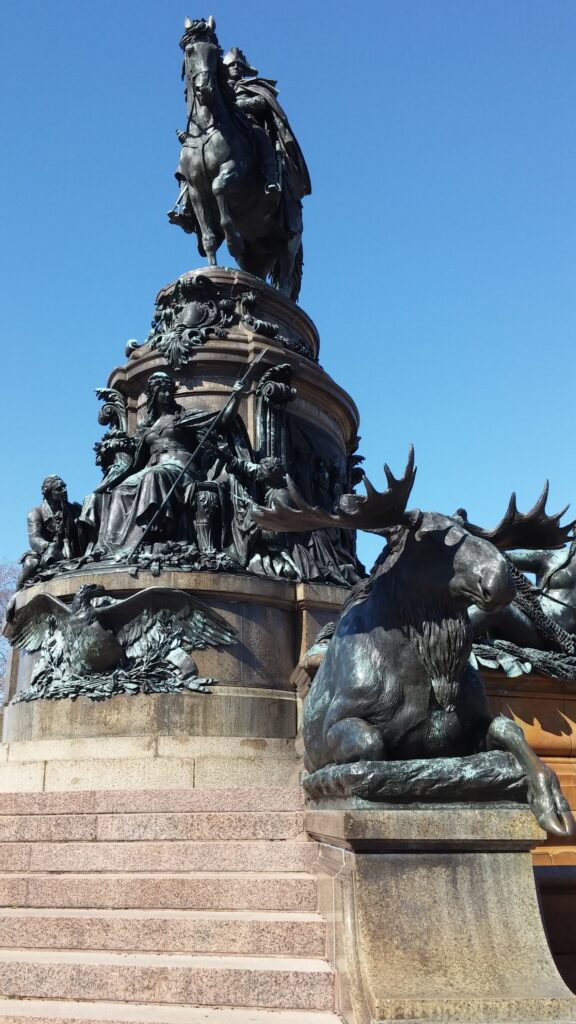
George Washington’s leadership during the Revolutionary War and his subsequent role as the nation’s first president left an indelible mark on the United States’ trajectory, making the statue a testament to the enduring ideals that continue to shape the nation. As visitors and passersby gaze upon the George Washington equestrian statue, they’re invited to contemplate the sacrifices, determination, and visionary leadership that paved the way for the United States’ formation. It’s a tangible link to the past, an embodiment of the aspirations that led to the nation’s birth and the principles that continue to guide it into the future. In a world that’s ever-changing, the statue stands as an unwavering sentinel of history and a beacon of inspiration. It prompts us to reflect on the resilience of those who forged a new path, to recognize the significance of Philadelphia’s role in that journey, and to uphold the ideals that George Washington symbolizes – ideals of freedom, democracy, and the unyielding pursuit of a better tomorrow.
Philadelphia’s City Hall
Philadelphia’s City Hall stands as a grand testament to architectural magnificence and civic pride, embodying the city’s historical significance and its enduring commitment to progress. Rising proudly in the heart of Center City, this iconic structure has served as a symbol of Philadelphia’s past, present, and future since its completion in 1901. Designed by architect John McArthur Jr. in the Second Empire style, Philadelphia’s City Hall is a masterpiece of architectural craftsmanship. Its striking facade boasts intricate details, ornate sculptures, and majestic columns that reflect the opulence of the era. The building’s central tower, crowned by the iconic statue of William Penn, soars to a height of 548 feet (167 meters), making it one of the tallest municipal buildings in the world. Beyond its architectural splendor, City Hall carries the weight of history within its walls. It was here, within its spacious chambers, that civic leaders and officials have convened to shape the policies and decisions that have shaped the city’s trajectory. The building’s role as the epicenter of Philadelphia’s governance reinforces its significance as a locus of democracy and the principles upon which the United States was founded. The William Penn statue atop the central tower is a quintessential symbol of Philadelphia’s Quaker heritage and William Penn’s foundational role in the city’s history. The statue gazes out over the metropolis, an eternal sentinel that watches over the city and its inhabitants. City Hall’s location at the intersection of John F. Kennedy Boulevard and Market Street amplifies its impact, as it anchors the urban landscape and serves as a rallying point for residents and visitors alike. Its central position within the city’s cultural and commercial hub ensures that it remains an enduring touchstone for those who traverse the city’s streets.
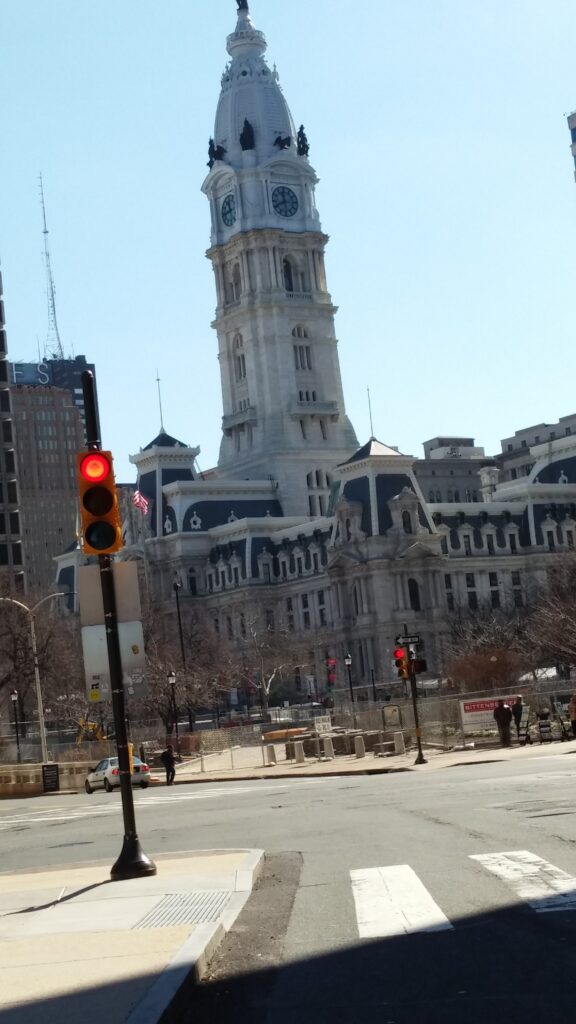
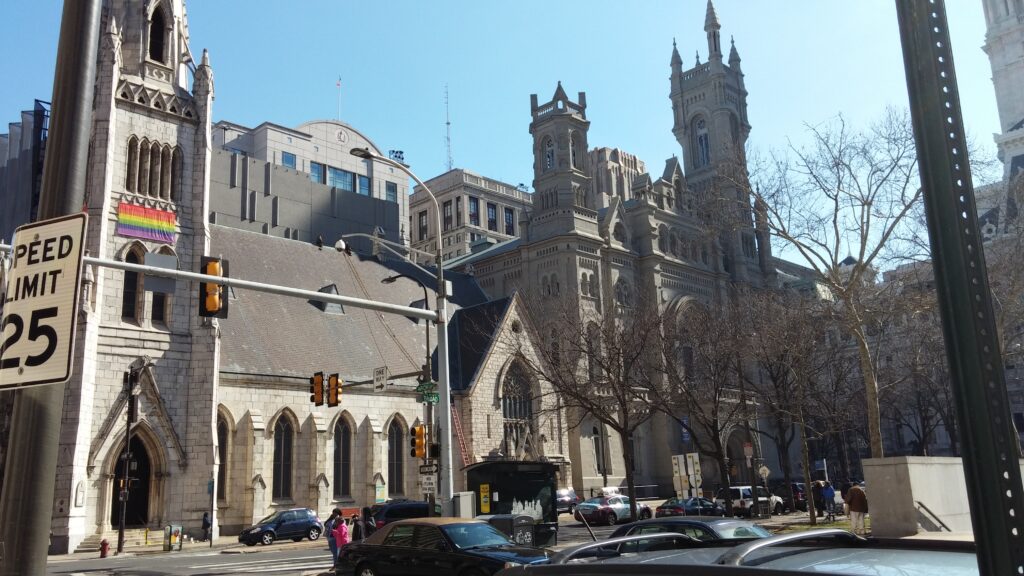
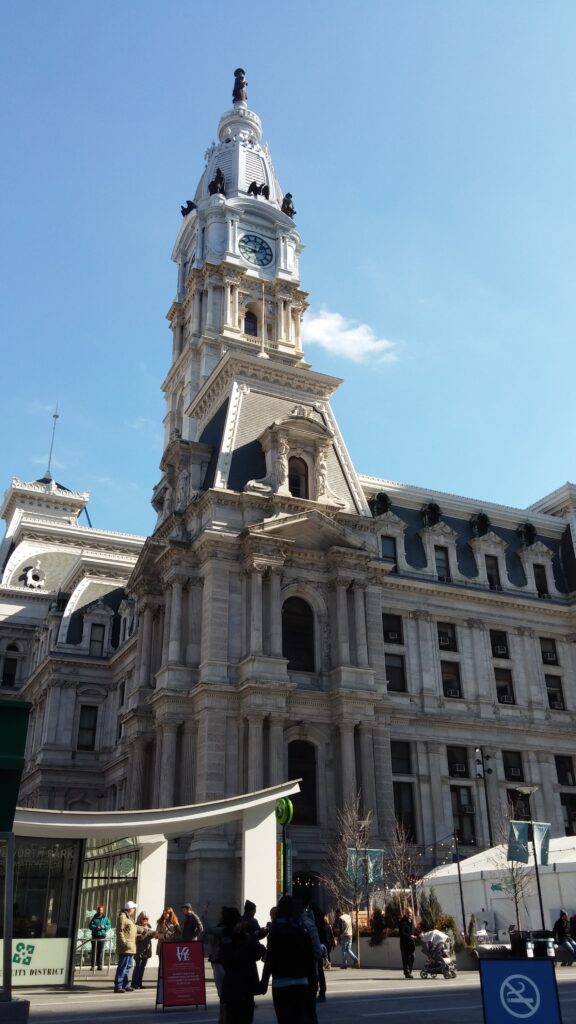
As I stood before the grandeur of Philadelphia’s City Hall, I felt a palpable connection to the city’s past, present, and future. The architectural opulence, the historical resonance, and the civic purpose converged to create a sense of unity and purpose. City Hall is not merely a building; it’s a living entity that encapsulates the spirit of Philadelphia – a city that cherishes its history, embraces its diversity, and forges ahead with determination and resilience. Just as the building’s tower reaches toward the sky, so too does Philadelphia strive for new heights of progress, guided by the principles that have endured for centuries.
